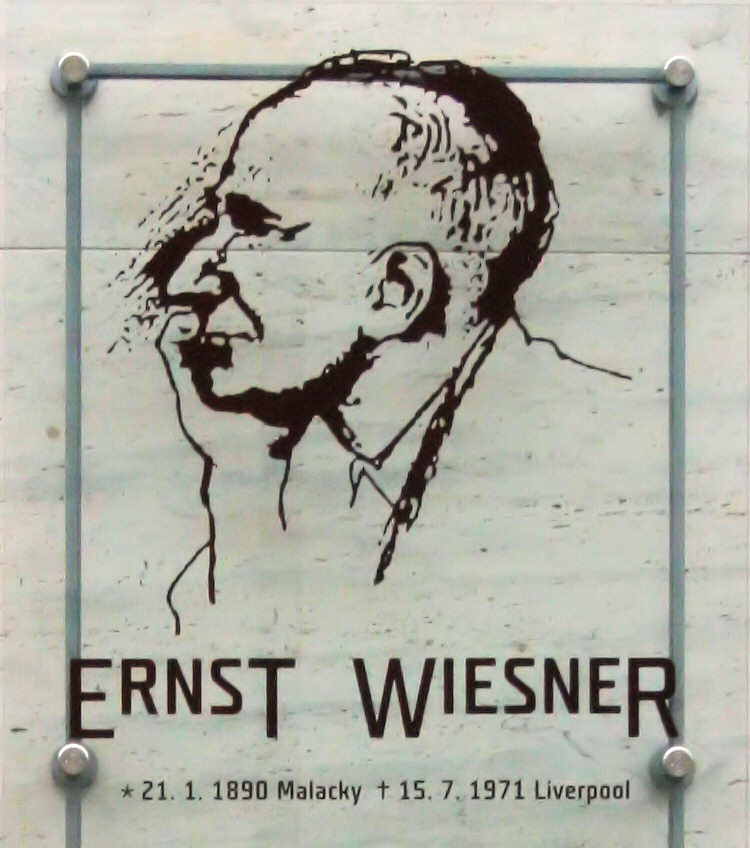Arnošt Wiesner on:
[Wikipedia]
[Google]
[Amazon]
 Ernst Wiesner, also known as Arnošt Wiesner (21 January 1890, in
Ernst Wiesner, also known as Arnošt Wiesner (21 January 1890, in
 Ernst Wiesner, also known as Arnošt Wiesner (21 January 1890, in
Ernst Wiesner, also known as Arnošt Wiesner (21 January 1890, in Malacky
Malacky ( German: ''Malatzka'', Hungarian: ''Malacka'') is a town and municipality in western Slovakia around north from capital Bratislava. From the second half of the 10th century until 1918, it was part of the Kingdom of Hungary.
It is one o ...
, Kingdom of Hungary
The Kingdom of Hungary was a monarchy in Central Europe that existed for nearly a millennium, from the Middle Ages into the 20th century. The Principality of Hungary emerged as a Christian kingdom upon the coronation of the first king Stephen ...
, Austro-Hungarian Empire
Austria-Hungary, often referred to as the Austro-Hungarian Empire,, the Dual Monarchy, or Austria, was a constitutional monarchy and great power in Central Europe between 1867 and 1918. It was formed with the Austro-Hungarian Compromise o ...
– 15 July 1971, in Liverpool
Liverpool is a city and metropolitan borough in Merseyside, England. With a population of in 2019, it is the 10th largest English district by population and its metropolitan area is the fifth largest in the United Kingdom, with a populat ...
) was a modernist architect
An architect is a person who plans, designs and oversees the construction of buildings. To practice architecture means to provide services in connection with the design of buildings and the space within the site surrounding the buildings that h ...
, one of the foremost interwar period architects of Brno
Brno ( , ; german: Brünn ) is a city in the South Moravian Region of the Czech Republic. Located at the confluence of the Svitava and Svratka rivers, Brno has about 380,000 inhabitants, making it the second-largest city in the Czech Republic ...
. His ancestors with German surnames Wiesner came from the area of modern Austria.
From 1908 to 1913 Wiesner studied at the Technical College and the Academy of Arts (taught by B. Ohmann) in Vienna
en, Viennese
, iso_code = AT-9
, registration_plate = W
, postal_code_type = Postal code
, postal_code =
, timezone = CET
, utc_offset = +1
, timezone_DST ...
. After World War I
World War I (28 July 1914 11 November 1918), often abbreviated as WWI, was one of the deadliest global conflicts in history. Belligerents included much of Europe, the Russian Empire, the United States, and the Ottoman Empire, with fight ...
he worked as an independent architect in the city of Brno
Brno ( , ; german: Brünn ) is a city in the South Moravian Region of the Czech Republic. Located at the confluence of the Svitava and Svratka rivers, Brno has about 380,000 inhabitants, making it the second-largest city in the Czech Republic ...
, until 1939. Wiesner was a very active architect in the city between the World Wars. His work was greatly influenced by Adolf Loos
Adolf Franz Karl Viktor Maria Loos (; 10 December 1870 – 23 August 1933) was an Austrian and Czechoslovak architect, influential European theorist, and a polemicist of modern architecture. He was an inspiration to modernism and a widely- ...
and his pure constructions with their classicized balance and monumentality are amongst the best works to be constructed in Brno at that time.
Afterwards Wiesner emigrated to Great Britain
Great Britain is an island in the North Atlantic Ocean off the northwest coast of continental Europe. With an area of , it is the largest of the British Isles, the largest European island and the ninth-largest island in the world. It is ...
where he joins the foreign anti-fascist resistance. After World War II
World War II or the Second World War, often abbreviated as WWII or WW2, was a world war that lasted from 1939 to 1945. It involved the vast majority of the world's countries—including all of the great powers—forming two opposing ...
he stayed in Britain. During 1948-1950 he acted as a lecturer in the School of Architecture at the University of Oxford
, mottoeng = The Lord is my light
, established =
, endowment = £6.1 billion (including colleges) (2019)
, budget = £2.145 billion (2019–20)
, chancellor ...
and during 1950–1960 at the University of Liverpool
, mottoeng = These days of peace foster learning
, established = 1881 – University College Liverpool1884 – affiliated to the federal Victoria Universityhttp://www.legislation.gov.uk/ukla/2004/4 University of Manchester Act 200 ...
. In 1969 he was nominated to the rank of honorary doctor by the University of Jan Evangelista Purkyně (now Masaryk University
Masaryk University (MU) ( cs, Masarykova univerzita; la, Universitas Masarykiana Brunensis) is the second largest university in the Czech Republic, a member of the Compostela Group and the Utrecht Network. Founded in 1919 in Brno as the s ...
) in Brno. When he died in 1971 he was buried in Liverpool's Allerton Cemetery.
Architectural works in Brno
* Gutmannův dům (Gutmann's house) 1919–22 * Moravská zemská životní pojišťovna (Moravian Provincial Life Insurance Company) 1920–1923 * Česká banka Union (Czech Union Bank; later seat of local branch of the Czechoslovak Broadcast) 1923–26 * Krematorium (Crematorium) 1926–29 * Vila Stiassni 1927 - 1929 * Palác Morava (Palace Moravia) 1927–29. Completely finished in 1936 * Rodinný dvojdům (Double-family house) 1928 * Moravská banka (Moravian Bank) 1929–30, co-author Bohuslav Fuchs * Činžovní dům Freundschaft (The Freundschaft Friendship"tenement house) 1930–31 * Various family houses, industrial and manufacturing buildings around the City of BrnoReferences
Sources
* *Ernst Wiesner 1890 - 1971, Obecní dům Brno 2005, *http://www.bam.brno.cz/en/architect/32-ernst-wiesner?filter=code {{DEFAULTSORT:Wiesner 1890 births 1971 deaths People from Malacky Czechoslovak emigrants to England British people of Slovak-Jewish descent Modernist architects Czechoslovak architects Masaryk University alumni